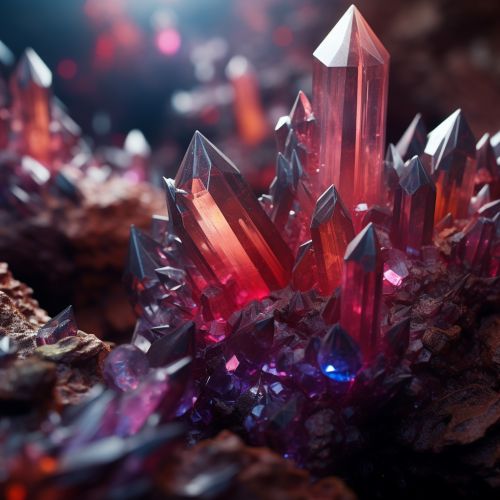Crystal
Introduction
A Crystal is a solid material whose atoms are arranged in a highly ordered, repeating pattern extending in all three spatial dimensions. The study of crystals and their structure is a field known as Crystallography. Crystals are often pure substances and can be formed by various processes, including precipitation from a solution, freezing, or more rarely deposition directly from a gas.
Formation and Growth
Crystals can form or grow from a melt or solution. The process of crystal formation via mechanisms of crystal growth is called crystallization. Crystallization is a complex and extensively-studied field, because depending on the conditions, a single fluid can solidify into many different possible forms. It can form a single crystal, perhaps with various possible phases, stoichiometries, impurities, defects, and habits.


Structure
Crystals are described by a unit cell, a set of vectors defining a small repeating unit that replicates to fill the whole crystal. A crystal's structure and symmetry play a defining role in its properties, which can lead to its utility across various fields, from electronics to optics.
Properties
The properties of a crystal are directionally dependent, a characteristic known as Anisotropy. This is a direct result of the ordered arrangement of atoms. Some of these properties can include refractive index, hardness, electrical conductivity, and thermal conductivity.
Types of Crystals
Crystals can be categorized into several types based on their physical and chemical properties. These include Ionic Crystals, Covalent Crystals, Metallic Crystals, and Molecular Crystals.
Uses and Applications
Crystals have many uses and can be found in numerous industrial applications. These can range from the use of diamonds and other precious gems in jewelry, to the use of quartz in watches, to silicon crystals in computer chips.
